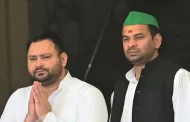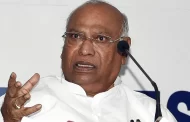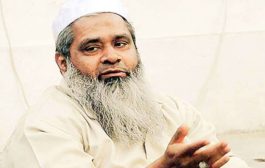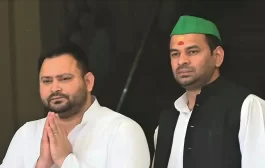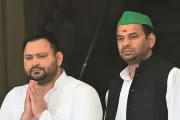PM Modi’s failures have meant that BJP is focussing on its communal base. The issues on the front burner are temple entry by women, beef lynchings, polygamy and ‘development’ has been forgotten
 The year 2018 was the most important in our politics since 2014. To appreciate why, let us look at the past four years and what they have meant.
The year 2018 was the most important in our politics since 2014. To appreciate why, let us look at the past four years and what they have meant.
The BJP won the first full Lok Sabha majority since Rajiv Gandhi’s great sweep of 1984-85. Yes, it is true that the BJP had only a majority of 10 on its own. But the fact that it also added a few dozen seats from its allies, put it in a comfortable position.
The logic is that having his own majority would ensure that the allies would not be a nuisance as they were for Manmohan Singh, or at least as they are thought to have been. Singh is seen as a figure who was incorruptible himself but, because of the lack of a clear majority, had to give into allies who might themselves not have been as upright as him.
The 282 seats that the BJP got on its own ensured that no such situation was likely to visit the new PM. And on the other hand, the thing that having a significant number of seats going to his allies, about 60 seats in all, ensured was that it would be difficult for insiders to rebel against the PM and his right hand man from Gujarat, Amit Shah.
The Gujarat cabal today runs the party with an iron fist and it is difficult for BJP leaders and workers who chafe against the authoritarian style of Modi and Shah to find the space to express this discontent. Having such a large number of non-BJP supporters of the government in the Lok Sabha meant that it would not be easy to pose a credible threat to the government. And so, the four years since 2014 meant that Narendra Modi had a free hand to be able to execute his agenda. Let us now turn to that agenda.
There are three broad sorts of BJP voters. There is the voter who is drawn to the party because it represents a coalition of castes and the voter belongs to some part of this coalition. For example, in Karnataka, the BJP base is the Lingayat community. It is natural for the Lingayat, whether or not she backs the BJP’s ideology, to be drawn to it.
Similarly, the BJP in Gujarat is the party of Patidars, and the majority or at least the plurality of ministers in all Gujarat cabinets, including those of Modi, have consisted of Patidars.
The second type of BJP voter is the one that is drawn to the party because of its ideology and that of its parent, the Rashtriya Swayamsevak Sangh.
The fact is that the BJP is the only really communal party in India. You could be wary and indeed be afraid of majoritarianism and could be voter of any party from the Janata Dal, the Trinamool, the DMK and ADMK, the National Conference and the PDP, the CPI(M), the SP or, like me, the BSP.
But if you like the ideological politics of breaking down mosques and avenging real or imaginary crimes of 500 years ago, or you want to force your diet on other people, there is only one party in India for you and that is the BJP. If you are Hindutvawadi, then your option is only the BJP.
There are communitarian parties in India, like the Akali Dal or the Indian Union Muslim League or indeed the Telugu Desam Party or the Majlis e Ittehadul Muslimeen. These are all parties that appeal to a narrow section of the electorate on the basis of identity, which is announced in their name. But none of these have a negative agenda like the BJP does. They do not want to constantly single out a community and attack it like the BJP and the RSS do and like they were organised to do.
The third category of voter that was drawn to the BJP in 2014 was the middle class Hindu who believed that her country was being taken by the politicians and all that was required to ‘make India great again’ was the honesty and genius of one man.
The year 2018 began with the realisation, especially among that third category of Modi bhakts (the ‘development’ wallahs) that this was a false messiah who was not about to immediately transform India into some first world Utopia
The year 2018 was vital because of the way these two voters, the communal minded one and the development minded one, looked at the party and its performance. The agenda of the Modi government was to be ‘development’. This was a fairly childish reduction because it assumed that all that had been done before Modi, by Nehru, Indira, Rajiv, Manmohan and Vajpayee, was not development. ‘Development’ was some special mantra that was cooked only in Gujarat and only by Modi. Only he would come and deliver it nationally.
The consensus today is that not only did Modi not deliver it, but because of his cluelessness, he actually harmed the economy. There is not an economist in the world who will disagree that the reckless and messianic way, in which things like Demonetisation were done, have damaged the economy of this country. The only difference of opinion is over whether the damage is substantial or very substantial. If there ever were an ‘anti-national’ act, it was Demo by NaMo, a foolish adventure by a simpleton who cannot be bothered to read files.
The year 2018 began with the realisation, especially among that third category of Modi bhakts (the ‘development’ wallahs) that this was a false messiah who was not about to immediately transform India into some first world Utopia.
The second signal was the Modi scam. I mean Nirav. How was it that a Gujarati man was able to take ₹12,000 crore of our money, from government of India-owned banks, without the knowledge of the government? What happened to ‘good governance’? This was pretty shoddy governance, not only because it showed that there was no control at all over the public sector built so diligently by Nehru and others who came after him, but that the promised end to corruption was nowhere in sight. This was also a family that Modi (Narendra) knew personally. There is a video of him fawning over the obese uncle of Modi (Nirav) who also fled with him and now says he cannot return.
All three of the pillars of the edifice that Modi had shown as an illusion – end to corruption, good governance and strong economic growth – now stood exposed as untruths. The year 2018 produced more evidence and then still more evidence, that all of the above was true. Modi’s sniggering contempt at how Manmohan had managed the Rupee against the Dollar and about the price of petrol (amplified on social media by Modi beneficiaries and chamchas like Amitabh Bachchan) came back to bite him.
Then came the awful meddling with institutions. It is hard to imagine anyone but the paid television channels seeing any benefit in corruption in the Central Bureau of Investigation or the ham-handed handling of the Reserve Bank of India. Modi has cost India two good RBI governors and has damaged the institution. Again, it is not easy to think of these as patriotic acts.
We should not be surprised by the results in the states of Madhya Pradesh, Rajasthan and Chhattisgarh, with the Congress winning all three. What should concern us is that the BJP managed to make it a tough fight despite its signal incompetence. And that closeness speaks one terrible fact. It is that the communal voter of the BJP is not only remaining with it, and that is expected, but is available in large numbers.
The year 2018 was the one in which Rahul Gandhi shed the tag that the official and partisan media had put on him. He cannot be dismissed by them or by the ruling party as someone who is insignificant. He has hauled himself to the centrestage and he will remain there in 2019 as we go into what will probably be the most important election in a generation.
Modi’s failures have meant that the party is focussing on its communal base. There is reason why the issues in India in 2018 – temple entry by women, beef lynchings, polygamy and so on – are on the front burner and ‘development’ has been forgotten. The positive way to look at this is to see that the BJP has now discarded its ‘Modi’ constituency to go back to what it knows best: dividing Indians and damaging India for political benefits (Advani and Vajpayee also knew how to do this quite well). The negative is that we will have to suffer a poisonous and bitter 2019 campaign. The Congress and Rahul Gandhi should be aware that they have to lift their game. The world is watching.
source: NH



